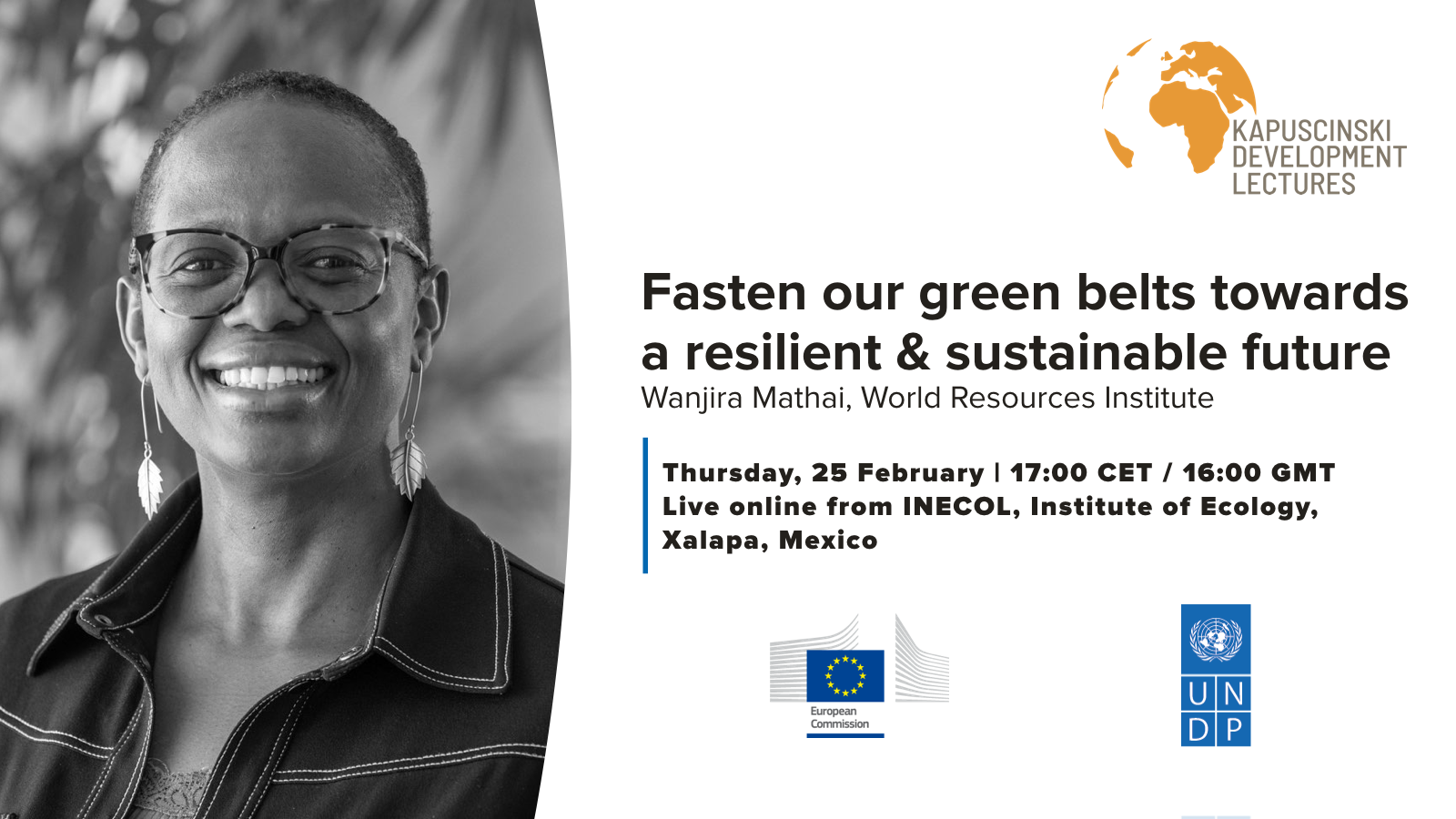harmony between human development and nature.
Civil society has shown valuable examples of effective partnerships which connect communities to their natural surroundings, particularly in Africa, where the Green Belt Movement has emerged. Without such connections, sustainability, such as that proposed by the Sustainable Development Goals (SDGs) remains abstract.
This Kapuscinski Lecture aimed to promote civil society integration with academia and government into effective partnerships for empathetic development characterized by harmony and connections between human activities and nature. This human-nature empathy highlights the importance of “Life on Land” (SDG 15) as a central element of the whole 2030 Sustainable Development Agenda. Ecosystem integrity is, in fact, the basis of this vision aimed at preserving the life support system in the biosphere. Together, we can and will unify to secure a more sustainable future.
This Kapuscinski Lecture aimed to promote civil society integration with academia and government into effective partnerships for empathetic development characterized by harmony and connections between human activities and nature. This human-nature empathy highlights the importance of “Life on Land” (SDG 15) as a central element of the whole 2030 Sustainable Development Agenda. Ecosystem integrity is, in fact, the basis of this vision aimed at preserving the life support system in the biosphere. Together, we can and will unify to secure a more sustainable future.
WATCH THE RECORDING OF FACEBOOK
- Facilitator: Carmen Maganda
- Koen Doens (INTPA)
- Mirjana Spoljaric (UNDP)
- Jose-Miguel Rubio (European Environment Agency)
- Agustín del Castillo, Journalist specialized in environment and rural livelihoods
- Georgina Vidriales Chan, Member of SENDAS AC and Pixcando NGOs, Coordinator for outreach, communication and biomarkets
- Alicia Chacalo Hilu, Professor, Department of Energy, UAM Azcapotzalco


No comments:
Post a Comment